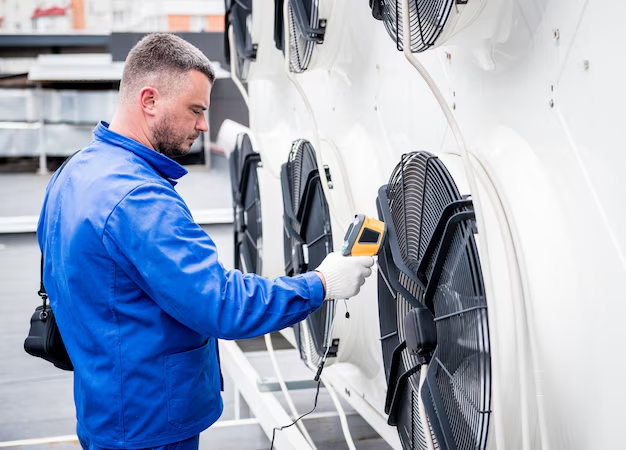❄️ Understanding How to Add Refrigerant to Your Refrigerator: A Comprehensive Guide
When your trusted refrigerator starts losing its cooling efficacy, it might not necessarily mean it's time for a new purchase. One potential solution is adding refrigerant – a key component in cooling systems. This guide explores how to know if your refrigerator needs refrigerant, the process involved, and some safety precautions, empowering you with knowledge about maintaining this essential household appliance.
📉 Signs Your Refrigerator May Need Refrigerant
A refrigerator running low on refrigerant can show subtle yet distinct signs. Recognizing these early can save you from potential food spoilage and unnecessary expenses.
Temperature Fluctuations
If your refrigerator's temperature becomes unreliable, fluctuating without explanation, this might be a red flag. Consistently high temperatures can clearly indicate low refrigerant levels.
Longer Cooling Time
A refrigerator that takes longer than usual to cool down after adding new groceries might be struggling with inadequate refrigerant to meet cooling demands.
Excessive Frost Buildup
If you notice excessive frost in the freezer compartment, it may suggest inefficiency in the refrigerant system.
🔍 Diagnosing Refrigerant Issues Safely
Before you jump into adding refrigerant, proper diagnosis is crucial. Sometimes, what seems like a refrigerant problem might be an issue with another part of the refrigerator.
Check the Thermostat Settings
Ensure that the thermostat settings haven't been altered inadvertently. A simple adjustment might solve the cooling issues you're experiencing.
Inspect the Condenser Coils
Dirty or blocked condenser coils can mimic refrigerant deficiencies. Regular maintenance, including cleaning the coils, is vital for peak performance.
Look for Visual Clues
Inspect areas around the refrigerator for any oily residue – a telltale sign of refrigerant leakage.
🛠️ Step-by-Step Guide to Adding Refrigerant
If you've diagnosed a refrigerant deficiency, following a structured approach to replenishing it is essential for safety and efficacy. Remember, handling refrigerant without proper training can be hazardous.
Tools Required
- Screwdriver: To access the compressor unit.
- Refrigerant: Ensure compatibility with your refrigerator model.
- Refrigerant Charging Hose: To safely transfer refrigerant to the unit.
- Gloves and Safety Goggles: For personal protection.
- Leak Detector: To ensure there are no leaks post-service.
Preparation
- Unplug the Refrigerator: Safety comes first. Ensure the appliance is completely powered down.
- Locate the Service Valve: Usually found near the compressor at the back of the refrigerator.
Adding Refrigerant
- Attach the Charging Hose: Connect it to the service valve. Ensure a secure fit to avoid leaks.
- Open the Valve on the Refrigerant Canister: Gradually introduce the refrigerant. Slow and steady is key to preventing overcharging.
- Monitor the Pressure: Use the hose's built-in gauge. Consult your fridge's manual for optimal pressure readings.
Final Checks
- Check for Leaks: Use a leak detector around the service valve and connections.
- Reassemble and Power On: Once assured there are no leaks, reassemble any panels and plug the refrigerator back in. Monitor its performance over the next few hours.
⚠️ Safety Precautions and Legal Considerations
Handling refrigerant carries specific risks and may be subject to local laws. Here's what you need to know:
- Personal Safety: Refrigerants can cause skin burns or respiratory issues. Equip yourself with appropriate safety gear.
- Environmental Impact: Incorrect handling can lead to harmful environmental effects. Professionals are trained to minimize such impacts.
- Regulatory Compliance: Some jurisdictions require certifications to handle refrigerants. Verify local regulations to ensure compliance.
🔄 Alternatives to DIY Refrigerant Addition
If you're unsure about handling refrigerant or desire peace of mind, consider professional services.
Professional HVAC Technicians
Certified technicians have the expertise and tools. While this option incurs costs, it typically guarantees safety and thoroughness.
Regular Maintenance Packages
Many appliance retailers offer maintenance packages that include refrigerant checks and refills as part of their service offerings.
📋 Quick Tips for Ongoing Refrigerator Maintenance
Consistent care extends the lifespan of your refrigerator and enhances its efficiency.
- Regular Cleaning: Keep condenser coils dust-free.
- Temperature Monitoring: Use a fridge thermometer for regular checks.
- Seal Check: Ensure door seals are airtight to prevent temperature loss.
- Professional Tune-Ups: Schedule annual check-ups to pre-empt major repairs.
📝 Key Takeaways
Here's a quick summary to keep your refrigerator in top shape and your refrigerant concerns at bay:
- 🔍 Diagnose first: Ensure low refrigerant is the issue.
- 🛠️ Follow steps: If recharging, adhere strictly to procedures.
- ⚠️ Prioritize safety: Equip yourself with the right gear or hire a pro.
- 🔄 Regular maintenance: A small effort can prevent costly repairs.
For any refrigerator concerns beyond adding refrigerant, maintaining a regular service schedule with a trusted technician can offer a reliable shield against potential issues. Your refrigerator is an investment in your home's operational efficiency – treat it with the care it deserves!
Remember, being informed is key. Whether it's handling refrigerants or regular maintenance, the right knowledge empowers you to make the best decisions for your appliances. With this guide, you're better equipped to navigate the sometimes intimidating world of refrigerator maintenance with confidence and ease.
